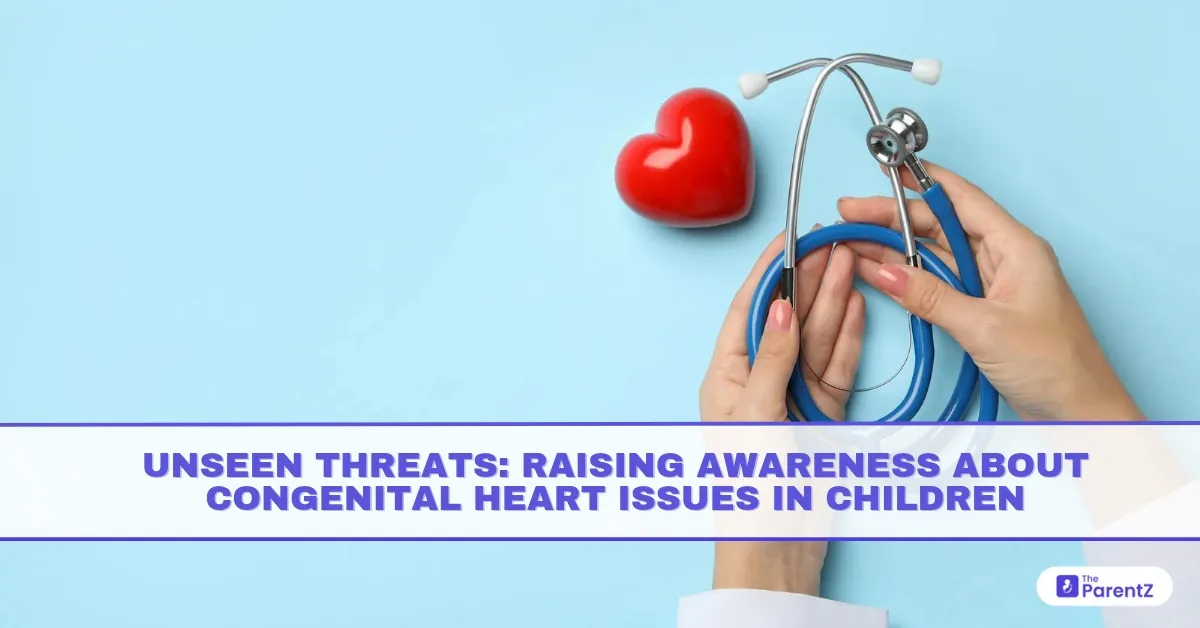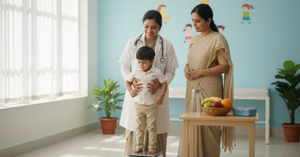Congenital heart defects (CHDs), conditions present from birth that affect the structure or function of the heart, are among the most common birth defects globally, including in India. Yet, they remain some of the least understood and under-recognised. Often invisible at first glance, these unseen threats can quietly impact a child’s growth, development, and overall quality of life.
Some children are diagnosed soon after birth. But many others are missed in infancy, only to be discovered later when symptoms worsen or complications arise. Raising awareness is critical not just for early diagnosis but also for giving these children a real chance at thriving.
What Are Congenital Heart Defects?
CHDs are structural abnormalities of the heart or major blood vessels present at birth. These can involve:
- The walls between heart chambers (septal defects)
- The valves that regulate blood flow
- The arteries and veins carrying blood to and from the heart
They range from:
- Simple defects like small holes in the heart (ASD/VSD) that may close on their own, to
- Complex conditions such as Tetralogy of Fallot, transposition of the great arteries (TGA), or hypoplastic left heart syndrome (HLHS), which often require surgery and long-term care.
In India, it’s estimated that 8 out of every 1,000 live births have a congenital heart defect, that’s over 200,000 new cases every year.
Why Are CHDs Often Missed?
Despite being common, congenital heart issues are frequently underdiagnosed due to:
- Lack of prenatal screening: Many expectant mothers don’t have access to fetal echocardiography
- Delayed newborn screening: Routine pulse oximetry and cardiac exams aren’t standard in all hospitals
- Silent symptoms: Some children show no clear signs until later in life
- Misattribution of signs like fatigue, breathlessness, or poor growth to other childhood conditions like asthma or malnutrition
This makes it essential for parents, caregivers, and teachers to be alert to subtle signs and push for early evaluation when something feels “off.”
Early Signs to Watch For
While some congenital heart defects are detected during pregnancy or soon after birth, others manifest more subtly in the first few years or even during adolescence. Signs may include:
- Bluish lips, nails, or skin (cyanosis)
- Excessive sweating while feeding or playing
- Poor weight gain or failure to thrive despite adequate nutrition
- Rapid breathing or breathlessness with minimal effort
- Recurrent chest infections or persistent cough
- Fatigue, especially during physical activity
- Palpitations or fainting spells
In older children, difficulty keeping up with peers, shortness of breath, or unexplained chest pain should not be dismissed as laziness or growing pains. These could be signs of an underlying defect.
How Are Congenital Heart Defects Diagnosed?
Once suspected, CHDs can be confirmed through:
- Echocardiography (ECHO): A painless ultrasound of the heart that reveals structural abnormalities
- Electrocardiogram (ECG): Records heart rhythm and can indicate enlargement or strain
- Chest X-ray: May show an enlarged heart or abnormal lung circulation
- Pulse Oximetry: Measures oxygen saturation lower readings would indicate a cyanotic heart defect
- Advanced imaging like cardiac MRI or CT angiography in complex cases
In some cases, prenatal echocardiography between 18–24 weeks of pregnancy can detect major heart defects early and allow for planning postnatal care.
What Causes Congenital Heart Defects?
CHDs may occur due to a combination of genetic, environmental, and unknown factors:
- Chromosomal abnormalities like Down syndrome
- Single gene disorders (e.g., Noonan syndrome)
- Maternal infections during pregnancy—like rubella
- Uncontrolled diabetes or thyroid issues in pregnancy
- Exposure to certain medications, alcohol, or tobacco
- Nutritional deficiencies, particularly folic acid
- Family history of heart defects
Often, there’s no clear cause, making universal screening all the more vital.
Are All CHDs Life-Threatening?
Not all congenital heart conditions are dangerous. Some:
- Close on their own or remain harmless for life
- Require monitoring without active treatment
- Can be completely corrected with surgery or catheter procedures
- Are manageable with medicines and lifestyle modifications
But ignoring even small defects can lead to heart failure, lung hypertension, infections like endocarditis, and poor development. That’s why timely diagnosis and follow-up are crucial.
Treatment and Long-Term Management
Treatment depends on the type and severity of the defect:
- Medications may control symptoms in mild to moderate cases
- Interventional cardiology procedures (e.g., device closure of holes) avoid open-heart surgery
- Open-heart surgery may be needed for more complex or life-threatening defects
- Lifelong monitoring is essential, especially for those with corrected or partially repaired CHDs
With the right care, children with CHDs can lead full, active lives, including school, sports, and careers.
Why Early Awareness Saves Lives
Early detection and intervention can:
- Prevent complications like heart failure
- Support normal physical and mental development
- Reduce the emotional and financial burden on families
- Increase survival rates and long-term health
Awareness also helps eliminate stigma. Children with heart defects are often misunderstood, isolated, or overprotected. They need understanding, inclusion, and confidence, not fear.
What Can Parents and Communities Do?
Ensure newborns get pulse oximetry and a physical exam within 24–48 hours
Ask for fetal echocardiography if there’s a family history or maternal risk factor
Watch for signs of poor feeding, growth, or breathlessness
Request an ECHO if your child faints, turns blue, or complains of chest discomfort
Advocate for school health screenings and first-aid training in case of cardiac emergencies
Join or support parent groups and heart foundations to stay informed
Conclusion: Let’s Not Miss a Beat
The heart begins to beat just weeks after conception, but its silent cries for help can go unheard for years. Congenital heart defects are not rare, and they are not always fatal, but they must be taken seriously.
By raising awareness, promoting routine screening, and creating a compassionate ecosystem, we can ensure that children with CHDs are not left behind. Their hearts may be vulnerable, but with timely care, they are capable of strength, resilience, and full lives.
Let’s make sure no child’s heart condition goes unseen because every beat matters.








Be the first one to comment on this story.